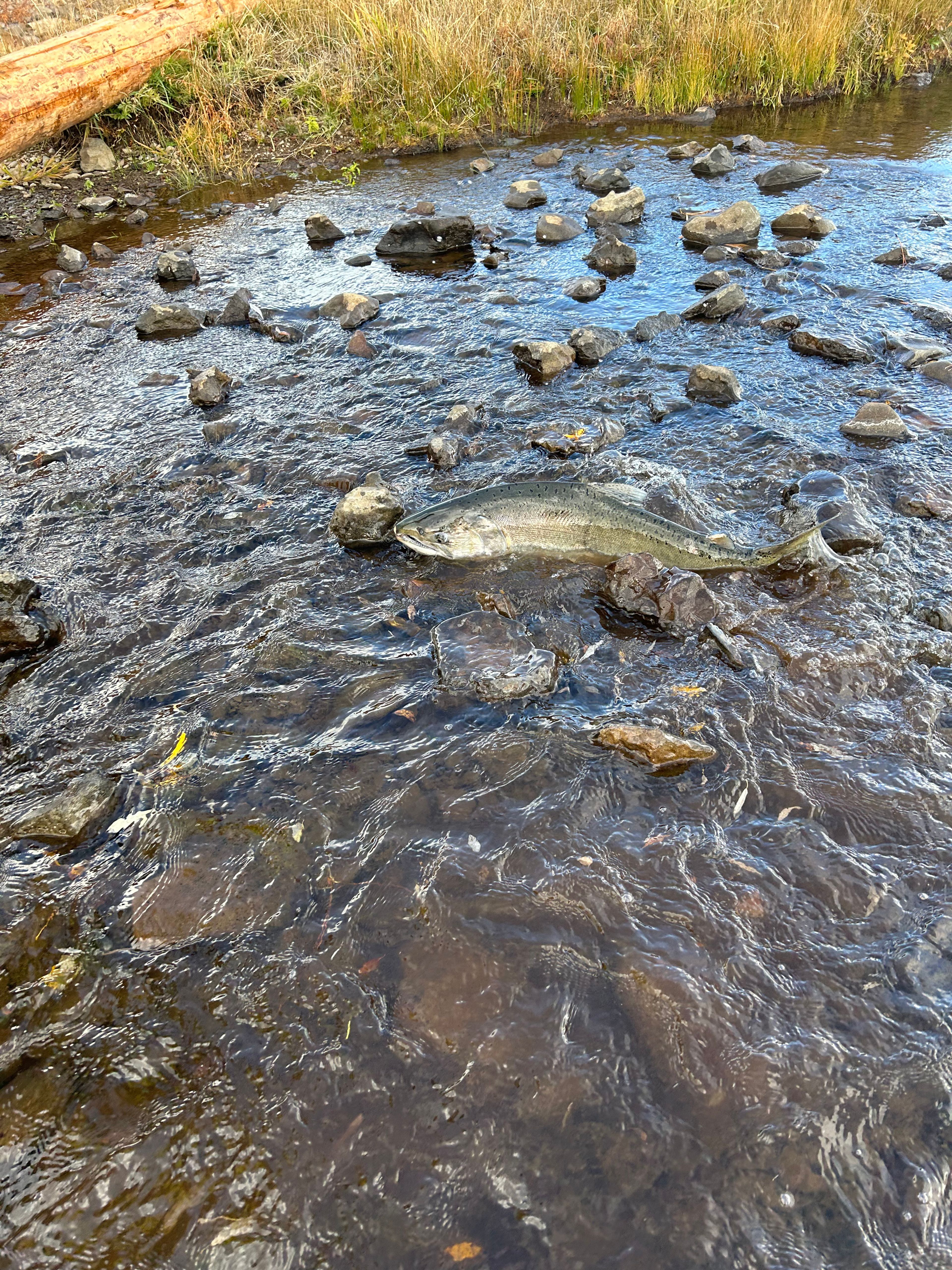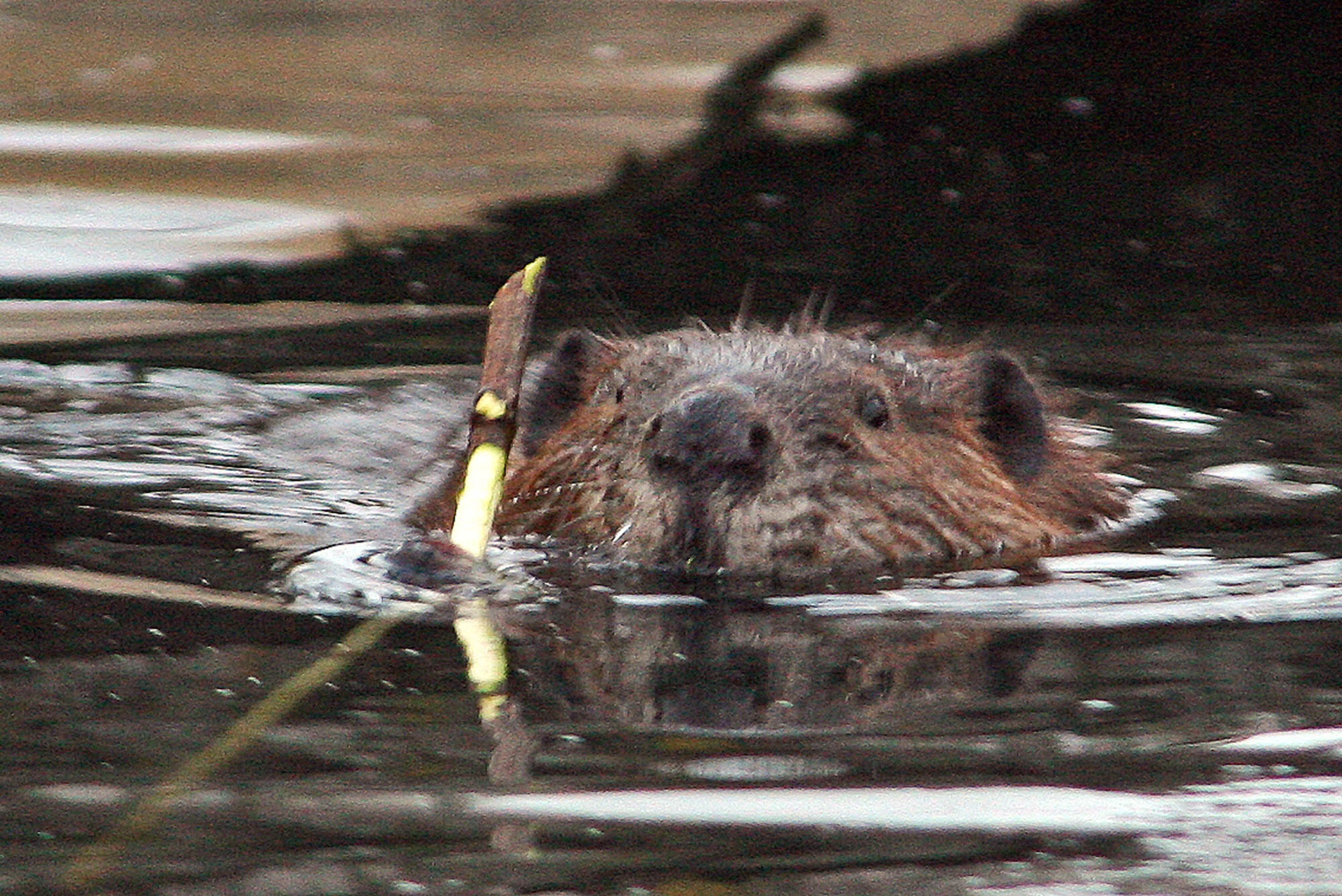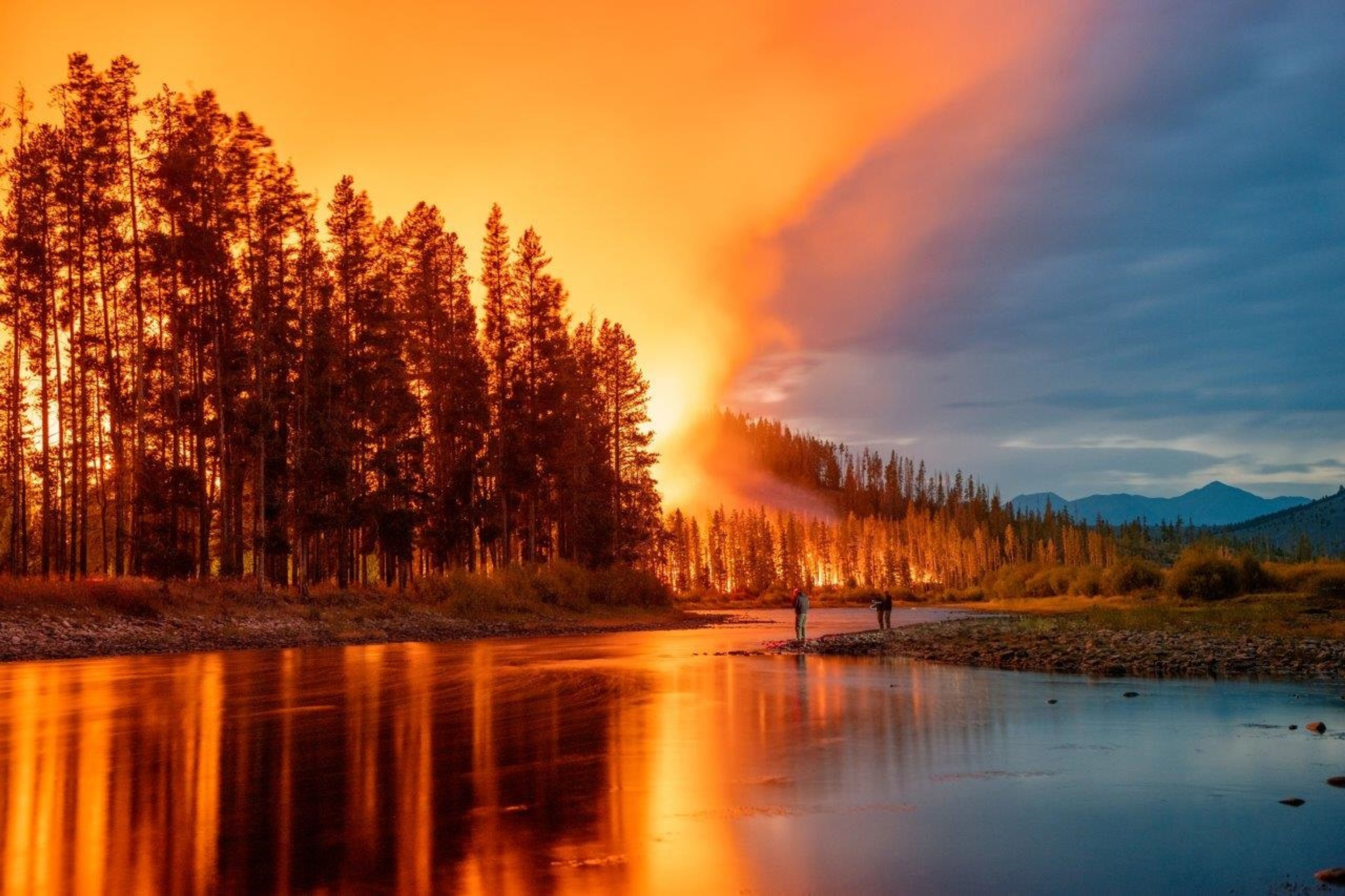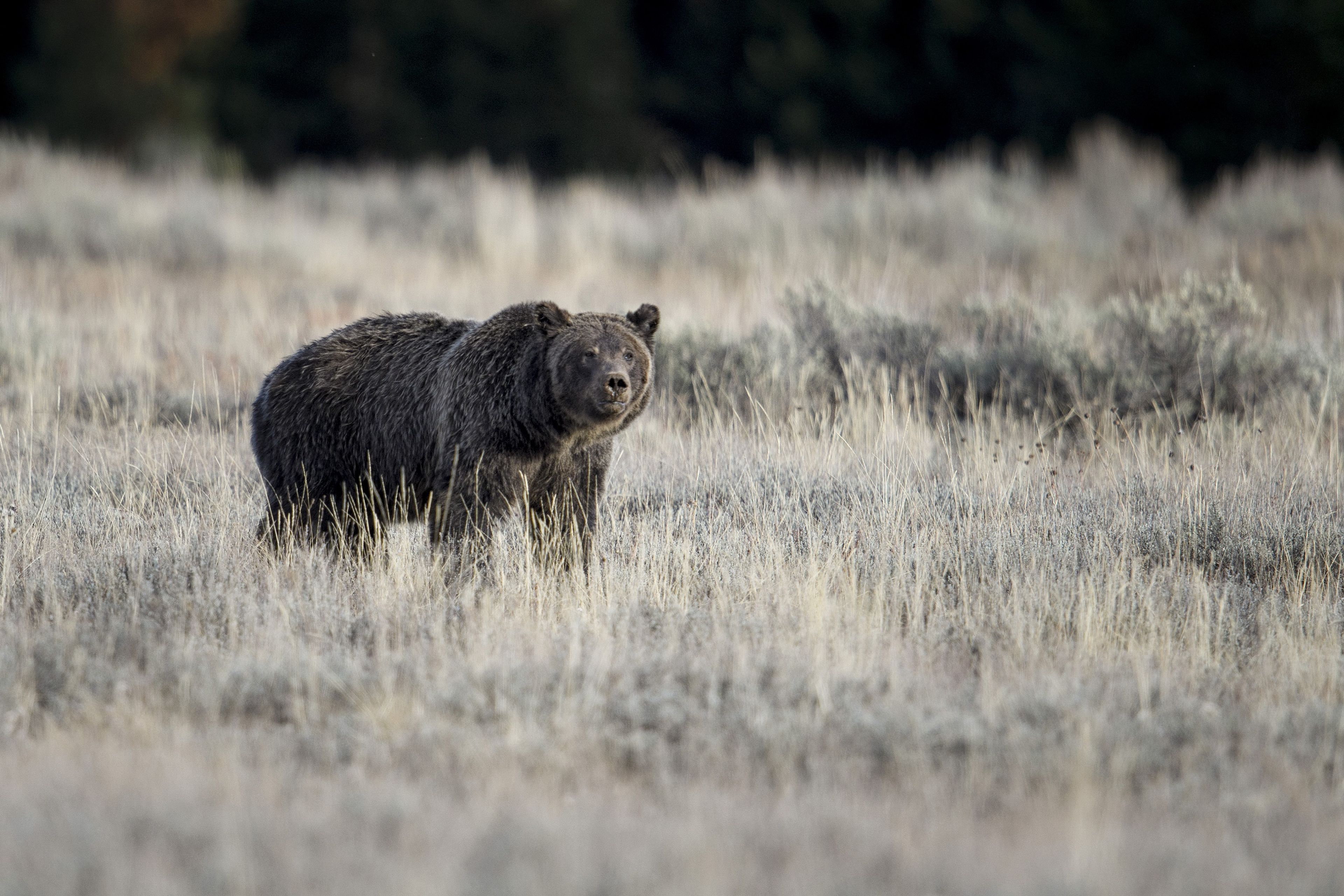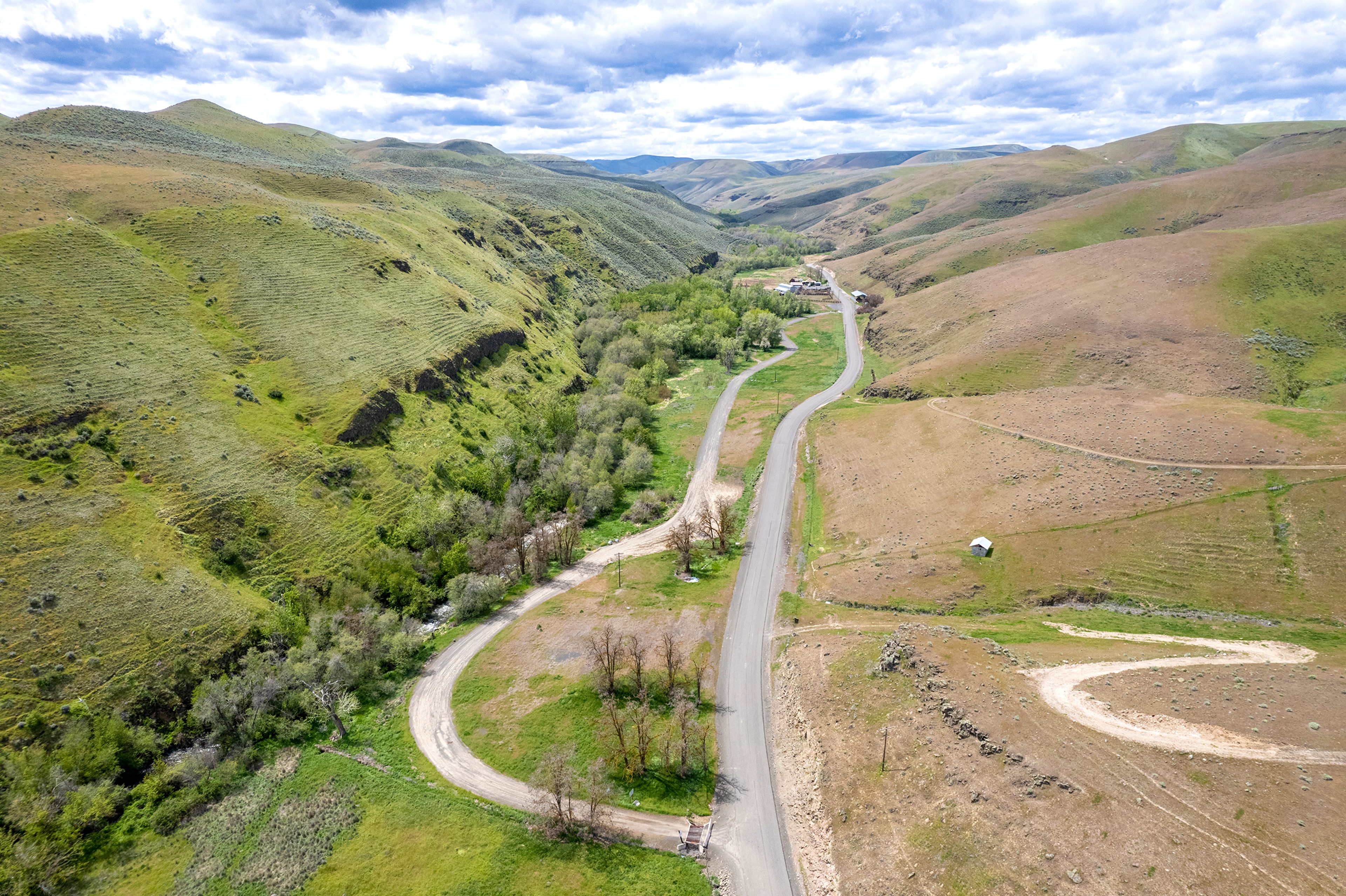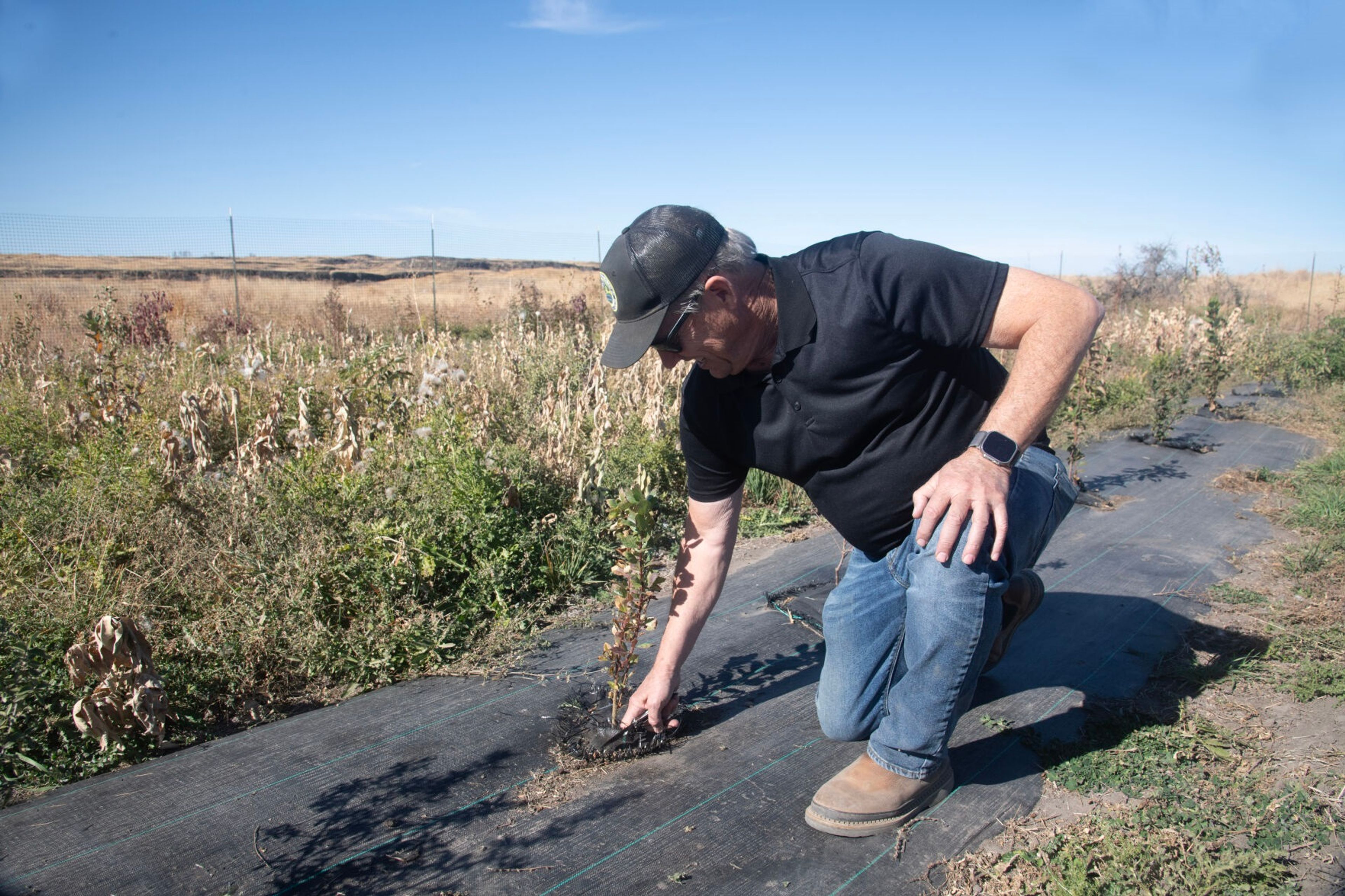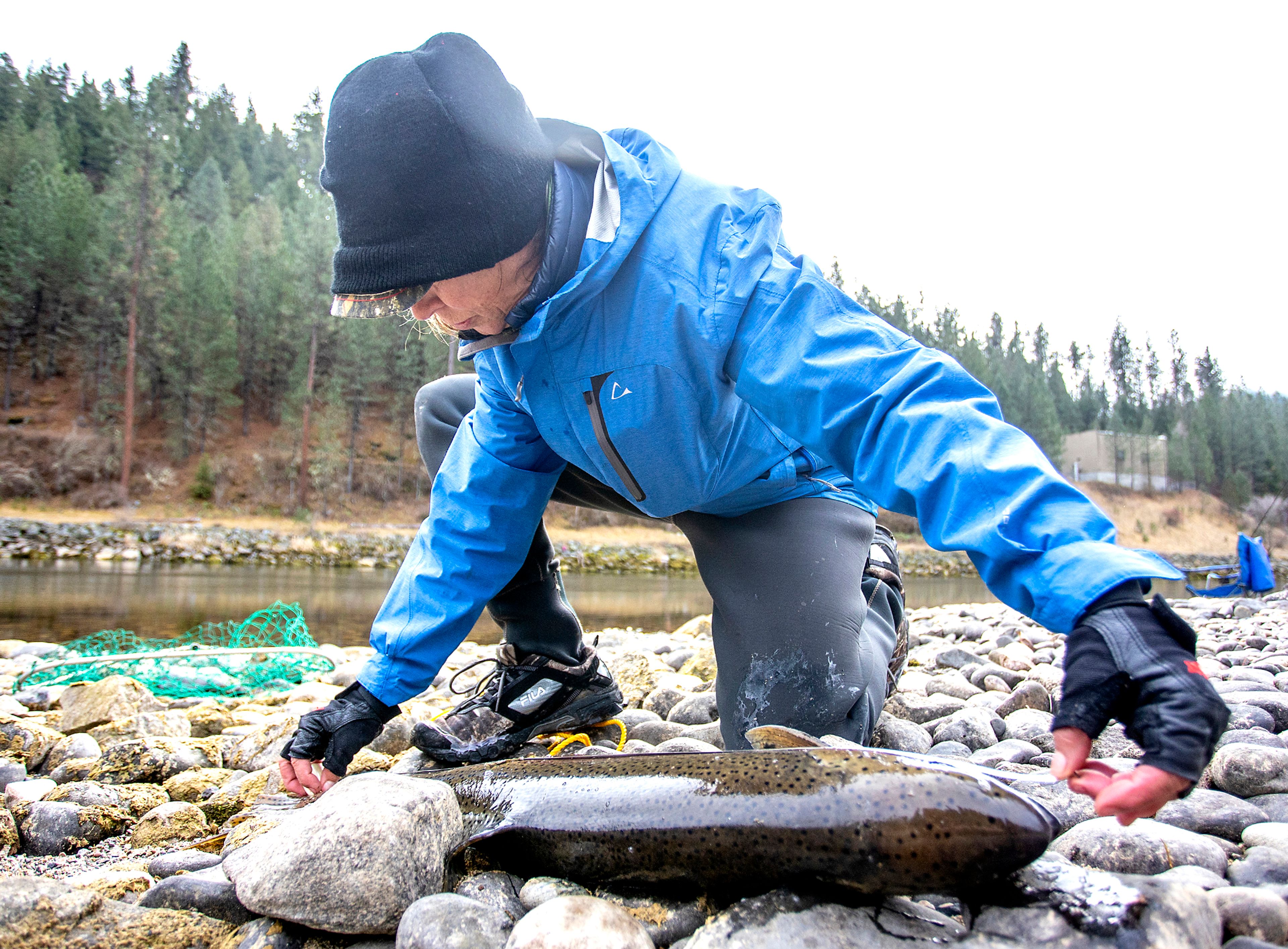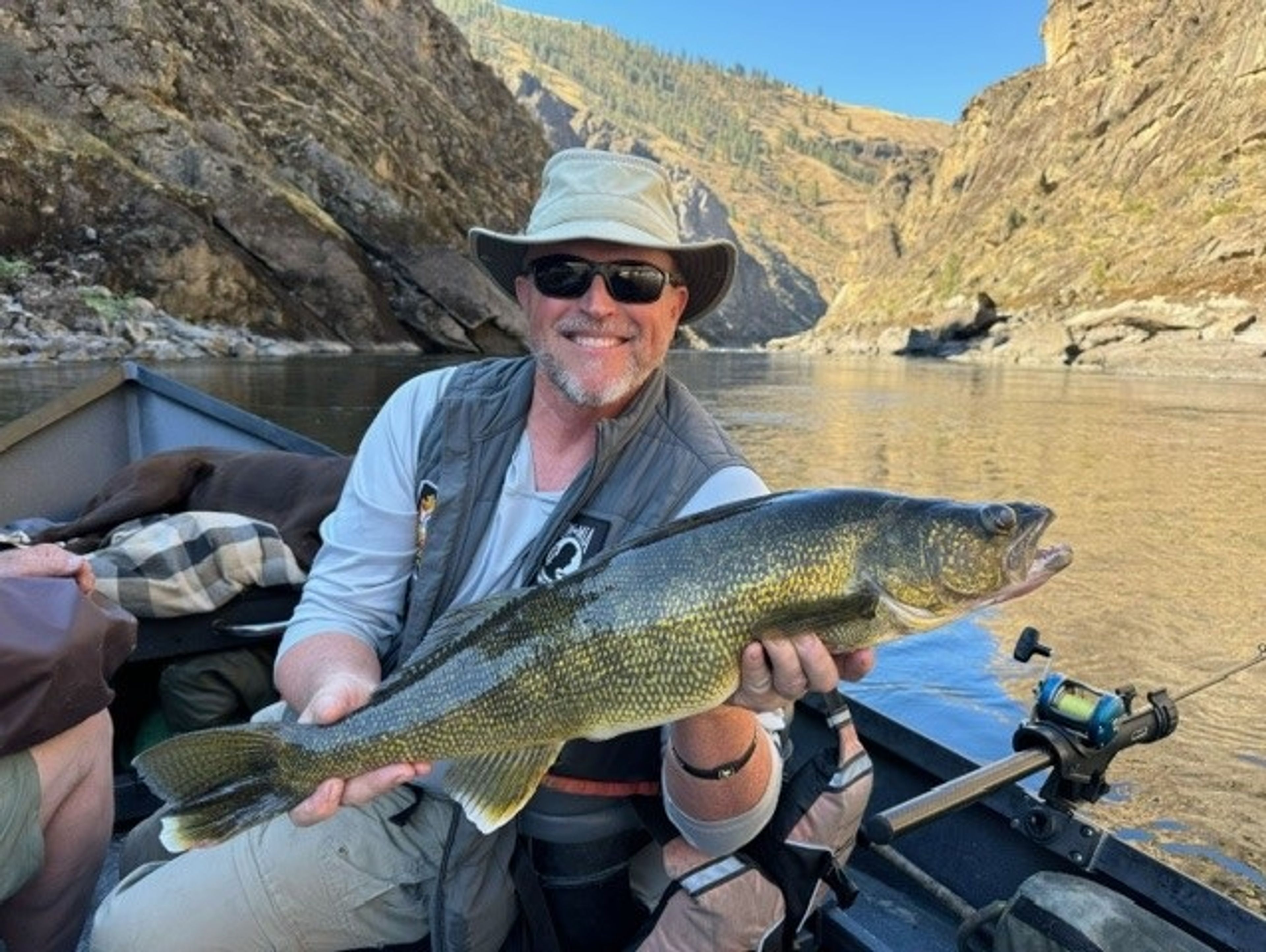Salmon return to formerly blocked section of the Klamath River Basin
Single fall chinook is believed to be first to make it upstream of former dam site in more than 100 years
Salmon have already taken advantage of dam breaching on the Klamath River.
According to the Oregon Department of Fish and Wildlife, an adult fall chinook salmon was spotted in a tributary upstream of the now absent J.C. Boyle Dam on Oct. 16. It is believed to be the first salmon or steelhead to return to that part of the basin in more than 100 years.
Four dams on the Klamath River that blocked upstream migration of salmon were removed this spring and summer, following a decadeslong process.
“The return of our relatives the c’iyaal’s is overwhelming for our tribe. This is what our members worked for and believed in for so many decades,” said Roberta Frost, secretary of the Klamath Tribes, in a news release. “I want to honor that work and thank them for their persistence in the face of what felt like an unmovable obstacle. The salmon are just like our tribal people, and they know where home is and returned as soon as they were able.”
The Klamath Dams did not have fish ladders and their hydroelectric output was small. After years of debate, authorities determined the cost to bring the aging dams up to standards outweighed their benefits and that removing them would improve water quality and open up about 400 miles of habitat for threatened salmon runs.
“This is an exciting and historic development in the Klamath Basin that demonstrates the resiliency of salmon and steelhead,” said Debbie Colbert, director of the Oregon Department of Fish and Wildlife, in a news release. “It also inspires us to continue restoration work in the upper basin. I want to thank everyone that has contributed to this effort over the last two decades.”
The removal of the dams is the latest in a campaign to restore salmon and steelhead runs by breaching dams deemed to be harmful to the fish. It followed the breaching of defunct dams on the Elwha River on Washington’s Olympic Peninsula.
The Nez Perce and other tribes, along with Oregon and environmental groups, continue to advocate for dam breaching on the lower Snake River. Those dams — Ice Harbor, Lower Monumental, Little Goose and Lower Granite — have functional fish ladders and provide valuable hydropower, irrigation and transportation benefits, but salmon and steelhead advocates argue the dams harm Snake River sockeye, spring chinook, steelhead and fall chinook, which are all protected by the Endangered Species Act. Last year, NOAA Fisheries said dam breaching is necessary to restore the wild fish runs to healthy and harvestable numbers.
The Nez Perce and other tribes agreed last year to pause their lawsuit against the federal government over the harm the dams cause to salmon and steelhead. In exchange, the government pledged to help the Nez Perce and other Columbia River treaty tribes develop alternative energy projects that can be counted as replacement power if the lower Snake River dams are breached in the future. The initiative also calls for studies that look for the best ways to replace the transportation and irrigation services now provided by the Snake River dams.
Dam supporters and many Republican allies in Congress bitterly oppose dam breaching and have pledged to protect the dams that they say are critical to both power generation and regional agriculture.
Barker may be contacted at ebarker@lmtribune.com or at (208) 848-2273.
